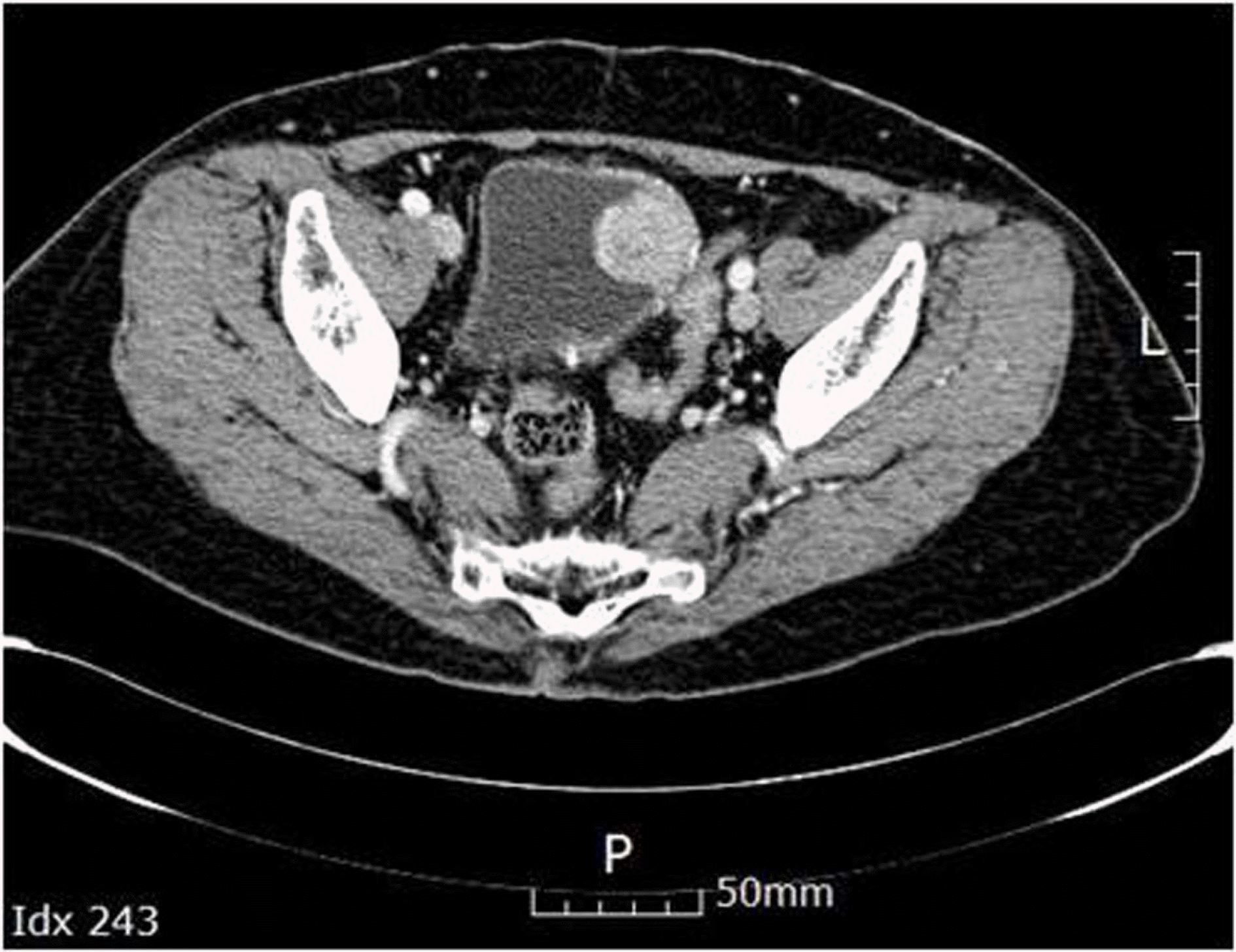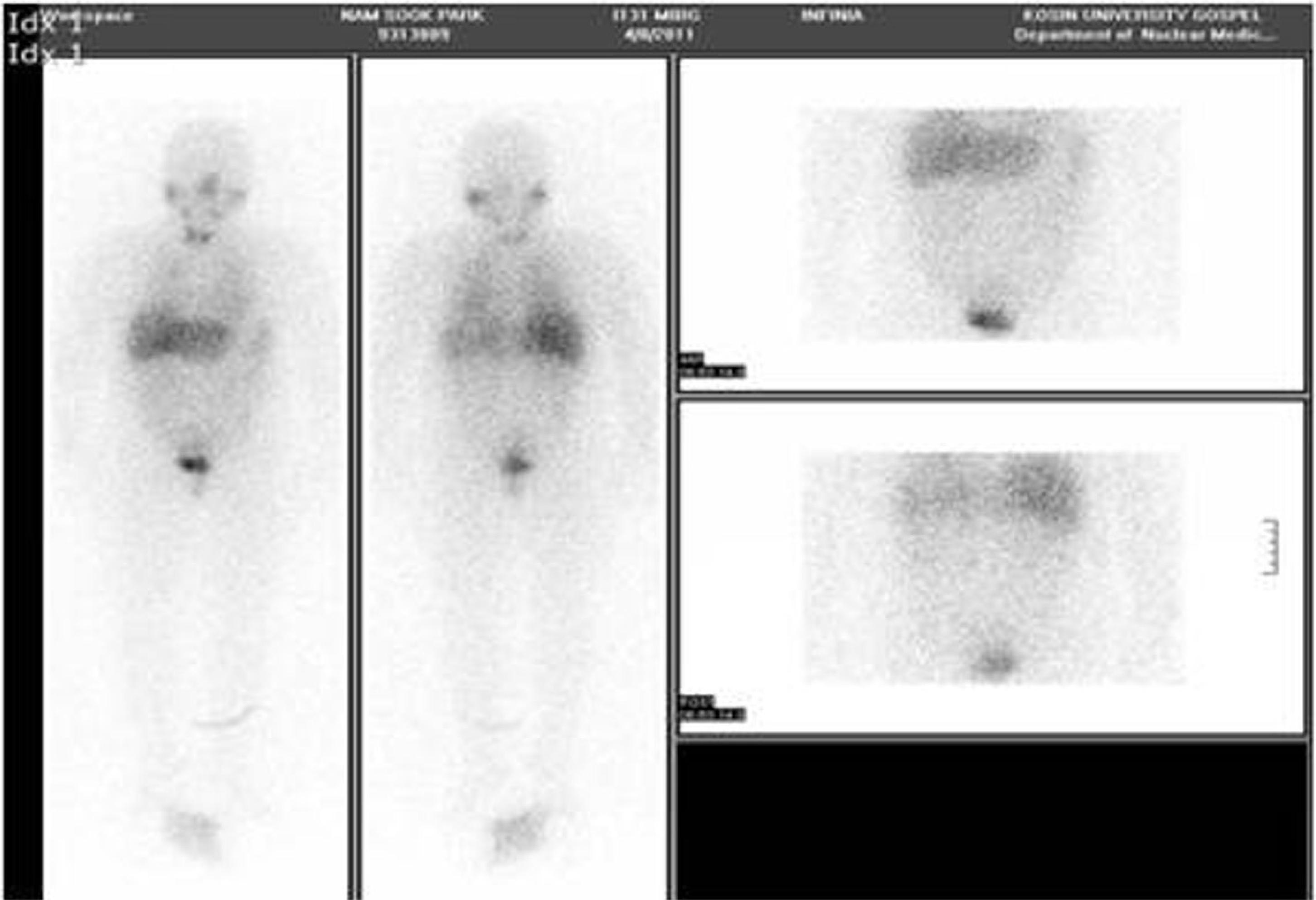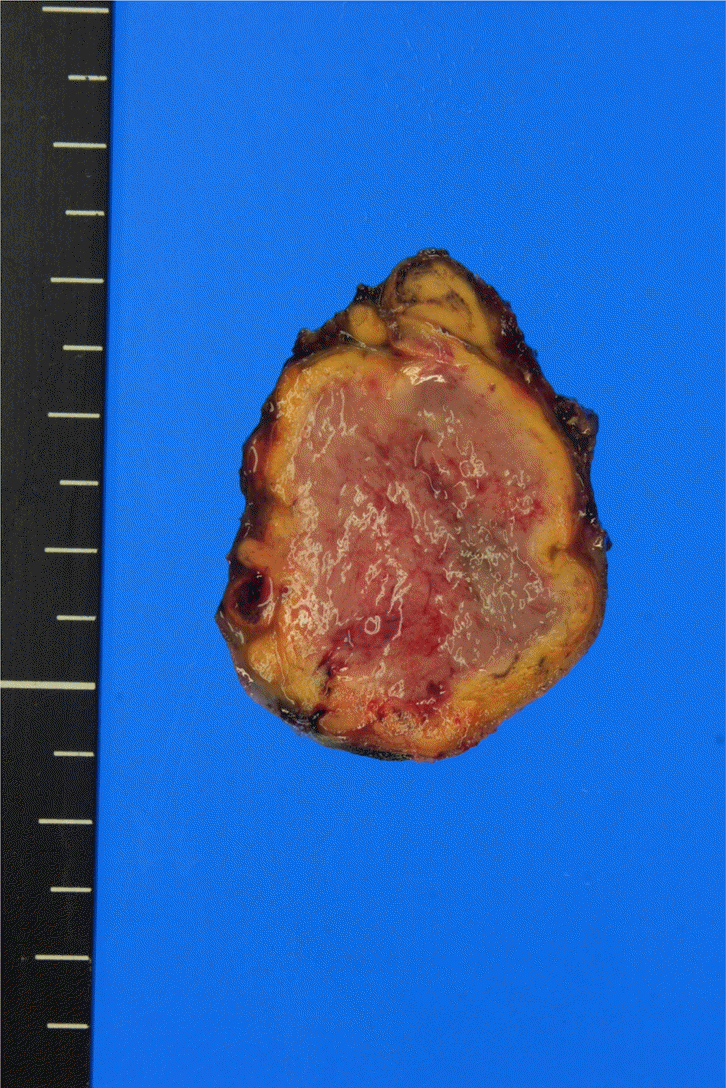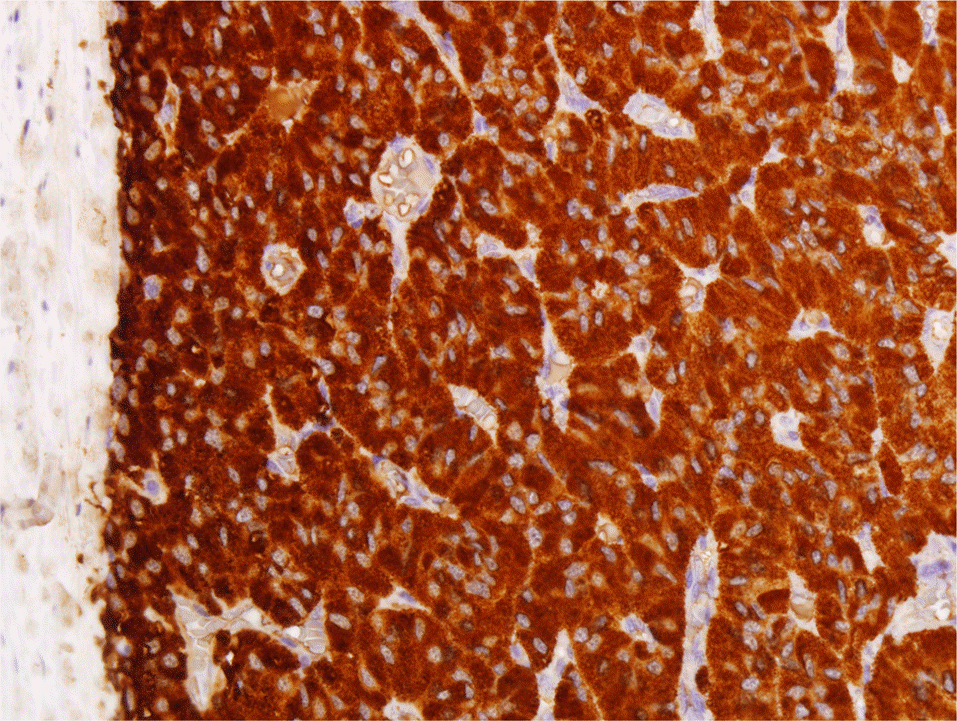Abstract
Pheochromocytoma is a catecholamine-producing tumor characterized by hypertension, headache, tachycardia, excessive diaphoresis, and angina pectoris. The thunderclap headache is so named because the pain strikes suddenly and severely. Although the symptoms of bladder pheochromocytoma are rather evident, the diagnosis of this rare neuroendocrine tumor can be missed. This study reports the case of a woman diagnosed with bladder pheochromocytoma who experienced thunderclap headache triggered by urination and angina pectoris as an initial manifestation. This case study suggests that thunderclap headache and angina pectoris occurring concurrently with sudden blood pressure elevation during or immediately after urination are important diagnostic clues of bladder pheochromocytoma.
REFERENCES
2.Gifford RW Jr., Manger WM., Bravo EL. Pheochromocytoma. Endocrinol Metab Clin North Am. 1994. 23:387–404.

3.Thompson LD. Pheochromocytoma of the Adrenal gland Scaled Score (PASS) to separate benign from malignant neoplasms: a clinicopathologic and immunophenotypic study of 100 cases. Am J Surg Pathol. 2002. 26:551–66.
4.Pacak K., Linehan WM., Eisenhofer G., Walther MM., Goldstein DS. Recent advances in genetics, diagnosis, localization, and treatment of pheochromocytoma. Ann Intern Med. 2001. 134:315–29.

5.Bourne RB., Beltaos E. Pheochromocytoma of the bladder: case report and summary of literature. J Urol. 1967. 98:361–4.

6.Farley SE., Smith CL. Unusual location of pheochromocytoma in the urinary bladder. J Urol. 1959. 81:130–2.

7.Kappers MH., van den Meiracker AH., Alwani RA., Kats E. Baggen MG. Paraganglioma of the urinary bladder. Neth J Med. 2008. 66:163–5.
8.Choi EK., Kim WH., Park KY. A case of a composite adrenal medullary tumor of pheochromocytoma and ganglioneuroma masquerading as acute pancreatitis. Korean J Intern Med. 2006. 21:141–5.

Fig. 1.
Abdominal CT showed an intraluminal polypoid mass of approximately 3 × 3.2 cm in size with heterogeneous enhancement at the left lateral wall of the urinary bladder.

Fig. 2.
131I-MIBGs can showed partial uptake in the left side of the urinary bladder, which is consistent with pheochromocytoma.





 PDF
PDF ePub
ePub Citation
Citation Print
Print




 XML Download
XML Download